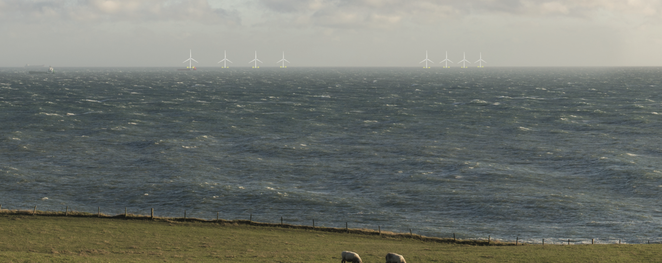Source: treehugger.com
Published: March 10, 2017

© Scottish Government
Offshore wind energy has been growing like crazy in the last few decades—so much so that there’s even talk of serious talk of multi-gigawatt offshore wind farms in the US in the not too distant future.
But offshore wind has so far been limited to areas where the seafloor is relatively shallow, and where it’s easy to build foundations for these gigantic turbines.
Floating wind turbines are different. Instead of using fixed foundations, they are anchored to the sea floor using cables. And that means they can be located in deeper waters, opening up many more areas where wind conditions are favorable and concerns about views and/or bird migration routes are less relevant. Alongside opening up new areas for development, the other major advantage of floating turbines—once they are being developed at scale—could also be reduced costs. Offshore wind costs are already plummeting compared to expectations, and some advocates argue that floating turbines will be even more economical. The foundations are—apparently—more expensive to manufacture, but much easier to install—thus saving time in the water, and because their movement with the waves should reduce vibrations, they may also need less maintenance too.
Up to now, the largest project approved was the 30MW Hywind floating wind farm off the coast of Scotland, but Business Green reports that Hywind is now going outgunned by the 50MW Kincardine development, which will be located 15km off the coast of Aberdeen.
Consisting of eight turbines, developers say the farm will have the capacity to power 56,000 homes. And while I couldn’t find details of when the farm is expected to be operational, once it is it should serve as proof of concept for much larger farms in Europe, Asia and North America too. As I mentioned in my previous article on Hywind, Carbon Trust has estimated that floating turbines could provide 8 to 16GW of offshore wind capacity in the UK alone by 2050. Reaching that goal would mean scaling up these technologies fast.
This article no longer exists at the Source link above. It can be found in the Matteroftrust.org Resource Library.
